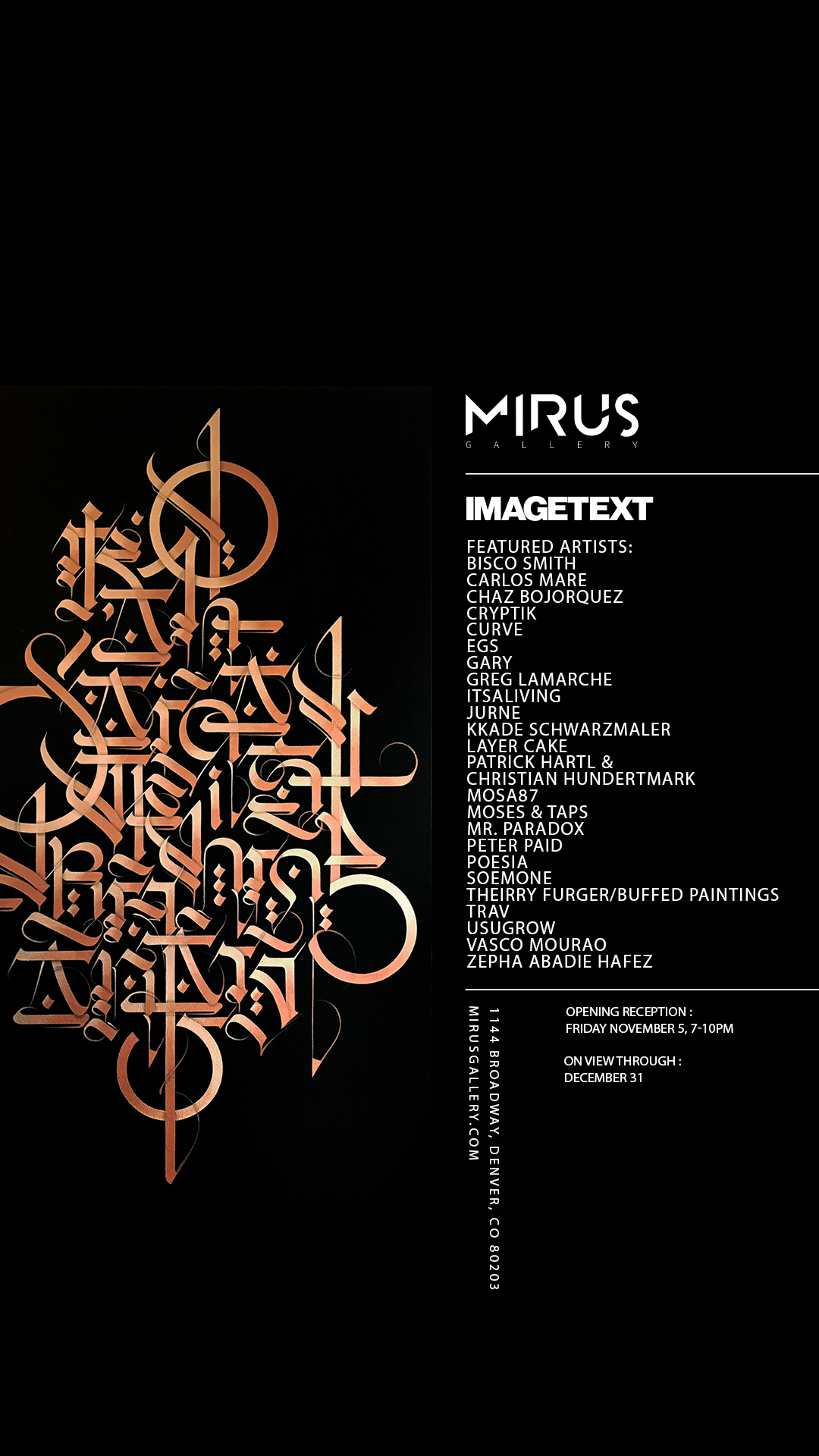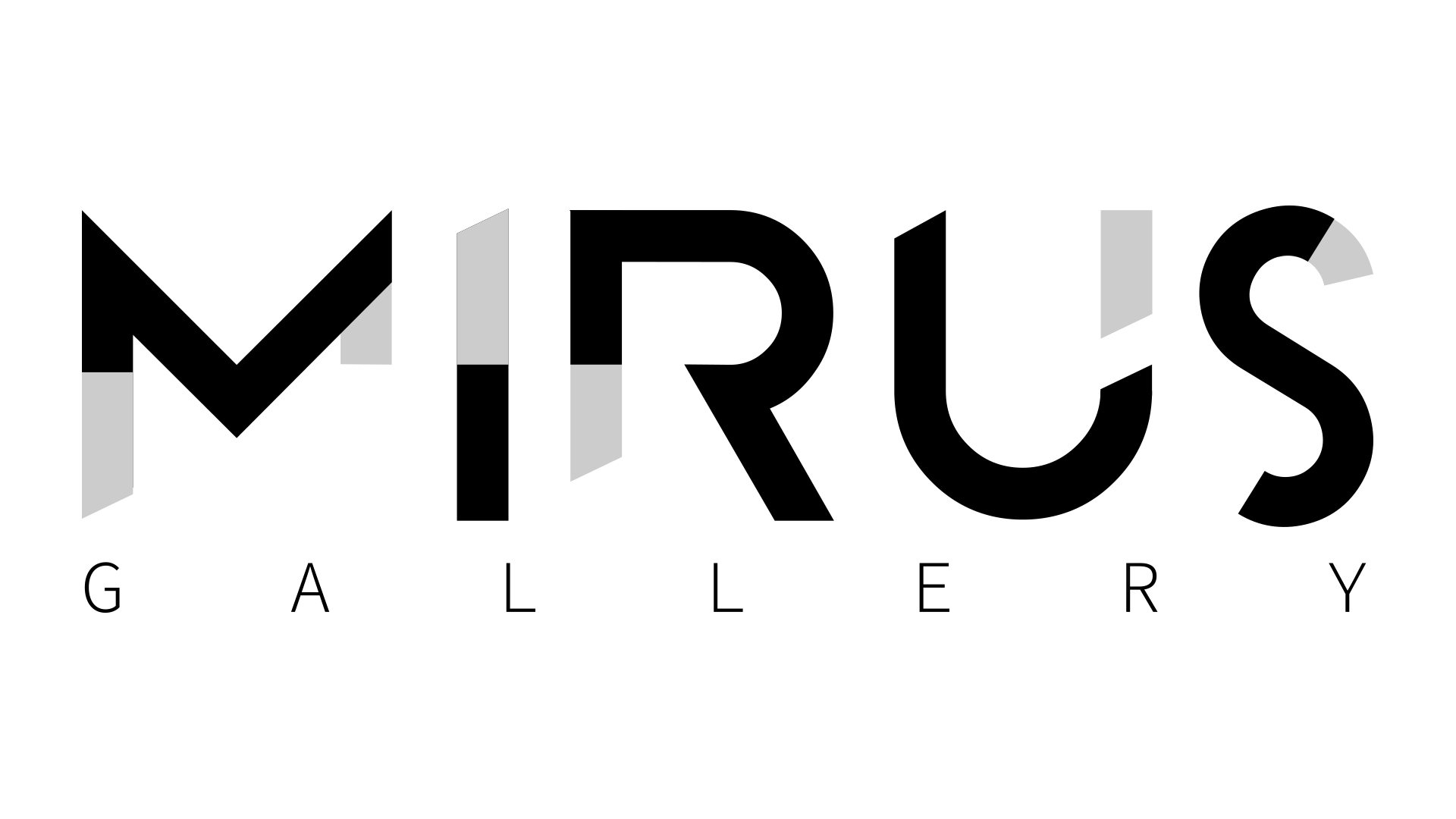
ImageText
ImageTextis a compelling survey of artworks based on letterform featuring a roster of influential international artists curated by Poesia. The group exhibition is an examination of the movement from writing on the wall to post-graffiti studio work. Join us for the opening reception November 5, 7-10pm. VIP and PressAdvance Preview by invite only6-7pm.This exhibition will be on display through December 31 and is free and open to the public daily.
Featured Artists:
Bisco Smith, Carlos Mare, Chaz Bojorquez, Cryptik, Curve, EGS, Gary, Greg Lamarche, Itsaliving, Jurne, KKade Schwarzmaler, Layer Cake / Patrick Hartl & ChristianHundertmark, Mosa87, Moses &Taps, Mr. Paradox, Peter Paid, Poesia, Soemone, Thierry Furger – Buffed Paintings, Trav, Usugrow, Zepha Abadie Hafez
About the Exhibition:
Writing, in its physical, graphic form, is an inseparable suturing of the visual and the verbal, the“imagetext” incarnate.W. J. T. Mitchell
Text-based paintings informed by the hybrid aesthetics, ethics and methods of graffiti are forms of writing that often exist on the edge of abstraction. They recall stylistic histories of deconstruction and the deliberate abstraction of letterforms to the limit – forms of writing visible to all but illegible to most – unruly image texts at the intersection of image and word that resist and exceed straightforward ‘reading’.
W.J.T. Mitchell refers to the image as the “wild sign” – in reference to the capacity of images to“explode signification” and to open up anarchic realms of non-sense and randomness. The imagetext is a limit case of the image as wild sign. These writing-based paintings mark the disorientating moment where the conventional relationship between the written word(signifier) and its meaning (signified) is disrupted – a moment which gleefully unsettles and challenges our automatic understandings of writing, language and art itself – revealing the inherent polyphony beneath the surface of our habitual everyday. For some artists, the imagetext becomes the wild sign by isolating, magnifying and elevating letterforms and letter fragments to centre stage; others compose patterned and harmonious calligraphic arrangements which reduce the signifying parts to an abstract whole; or via multi-layered and reworked surfaces which evoke the visceral and ephemeral energy of work in urban environments – paintings which exceed the frame and are uncontained by institutional space.
Paintings are material objects that, as such, have material lifespans. However, as artworks in gallery space these paintings are likely to survive for much longer than their street-based counterparts – which, unlike art in gallery space, are seldom painted with the expectation that they will persist, and indeed are often subject to willful destruction. W.J.T. Mitchell argues that pictures serve merely to transport images, and that while pictures as physical objects may be destroyed, the images they carry are essentially indestructible in that we hold these in our memories, experiences and imaginations. While all paintings are ephemeral, images defy time.This fundamental ephemerality is referenced explicitly by some artists, in incorporating elements suggestive of the buff in the layers they present to the viewer. Others intentionally arrest time through repetition or by documenting a moment of velocity in the process of writing– as Zepha puts it, “fixing speed in time”.
Repetition defies time and destruction and is also key to the imagetext as wild sign – as “words do not become tame, they become wild, through repetition.” (Chesterton, 1910) It has long been noted that repeating words can be a transcendent experience:
Words…though habitual to all of us, are, when abstractly considered, exceedingly wonderful; in so much, that by endeavouring to think of them with a spirit of intense inquiry, I have been affected even with giddiness and a kind of stupor, the consequence of having one’s faculties stretched. (Boswell, 1782)
Indeed, the ‘semantic satiation’ that results from repeating a word means that our eyes essentially develop full bellies – they can stomach/read no more, and the seamless connection between words and their meanings falls apart. This movement towards abstraction and non-sense means that the word vanishes, leaving only letter forms in its wake, which we can then experience more fully as kinetic and aesthetic imagetexts. While repetition may be found most obviously in particular works that literally repeat words until they dissolve into wild signs, crucially and metaphorically, repetition also resides in the very act of text-based painting itself.As Schacter (2014) notes, this involves “infinite cycles of repetition, modification, transformation: a search for the perfect form…through incessant invention.”Susan HansenLondon, October 2021
Hourly Schedule
Monday
- 12 - 5
- Gallery Open Hours
Tuesday
- 12 - 5
- Gallery Open Hours
Wednesday
- 12 - 5
- Gallery Open Hours
Thursday
- 12 - 5
- Gallery Open Hours
Friday
- 12 - 5
- Gallery Open Hours




